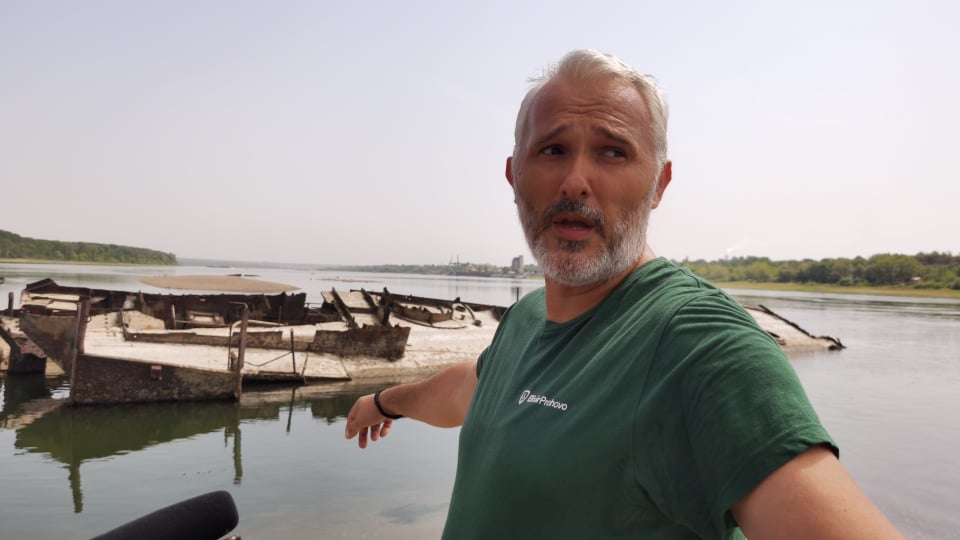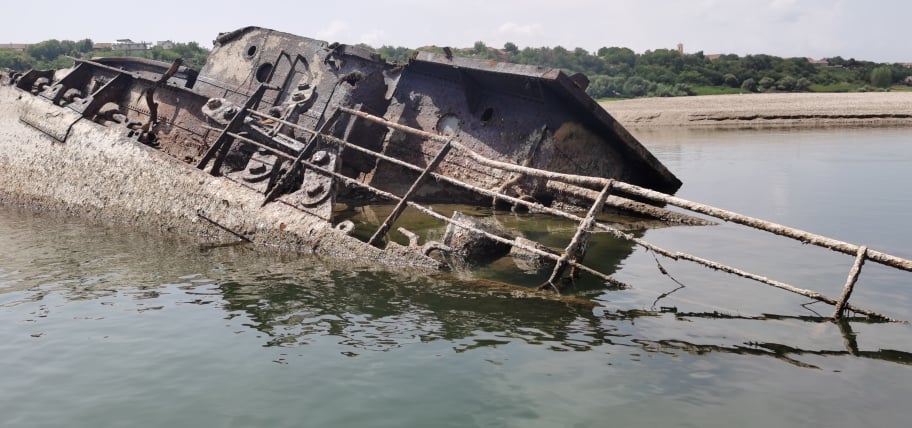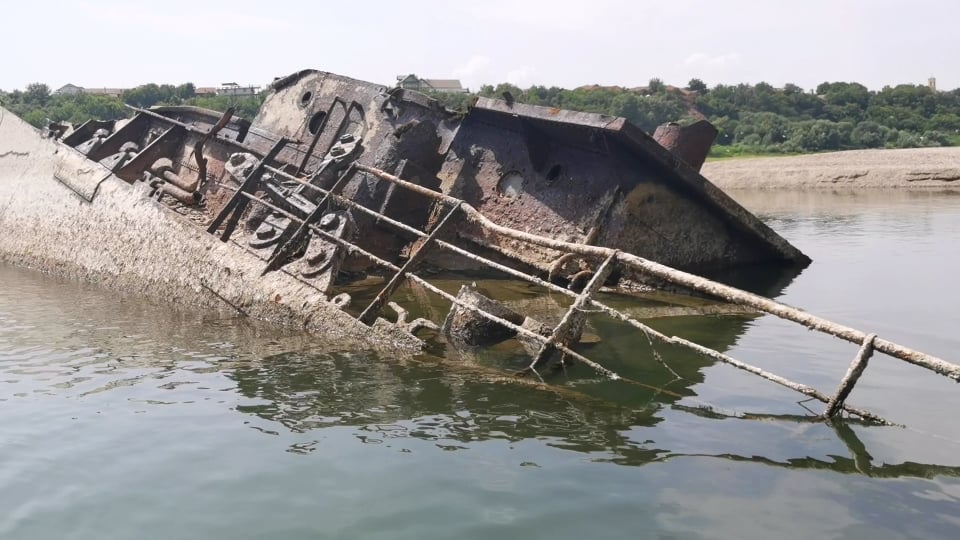The operation, known as “Operation Danube Elf,” took place in Prahovo near Negotin in Serbia in 1944. During this operation, Hitler’s rear admiral Paul Willy Seeb decided to sink approximately 150 vessels of the German war fleet, including 20 ships and one hospital ship carrying 1,600 wounded soldiers.
Ninety-year-old Dušan Brzulović Šane from Prahovo, near Negotin, is perhaps the last eyewitness who observed the “Operation Danube Elf” at the age of 11.
“I personally witnessed the great drama that unfolded in Prahovo in 1944 on the Danube from July to October. I remember it vividly, as if it happened yesterday. The weather was still nice, and we children spent all day at the beach. Suddenly, there was a loud noise, like thunder, and the entire village shook. The Germans arrived in ships and anchored there,” said Dušan.

Foto: SE Serbia News
He added that he received his first metal spoon from the Germans, as previously, wooden spoons were used in this small place in the eastern part of Serbia. In 1944, he saw enamelware for the first time and enjoyed delicious canned beef, raisins, dried figs, and chocolate.
Before sinking the ships in Prahovo, the Germans constructed a Polish airport near the railway station. They also emptied the ships and provided locals with food, blankets, and other supplies, excluding weapons and ammunition.
“I remember that they moved the ships along the river to sink them exactly where they wanted and to block that passage. There was a noise. Some sank faster, while others sank more slowly because the Danube wasn’t very deep even then. Some remained visible like ghosts, while others still lie at the bottom today,” said perhaps the only living eyewitness of the “Operation Danube Elf.”
According to official records, the ships anchored near Prahovo on September 1, 1944, and were sunk between September 6 and 7. The Germans had planned to transport heavily loaded ships with dangerous cargo through the Djerdap strait towards Belgrade. However, on September 5, 1944, the Red Army’s ground forces caught up with them, leading to a confrontation near Turn Severin on the left bank of the Danube. Rear Admiral Zib then decided to block the waterway by sinking the ships on top of each other. The hospital ship “Bamberg” was also among those sunk.
The ships were deliberately sunk in a stacked manner to obstruct the Soviet flotilla’s navigation on the Danube. When the work was nearly finished, General Zib received a sudden order on September 7 to halt the sinking immediately. There are no official documents regarding the fate of the wounded. The day before the sinking, General Zib had ordered their evacuation, but there is no further written evidence of whether this was carried out. Zib was initially sentenced to death for this decision, but the sentence was later overturned, and he was decorated.

Foto: SE Serbia News
“When a ship departs the downstream ship lock, it takes around an hour to reach the 858th kilometer of the Danube downstream, and about two hours upstream. Therefore, the ship lock operation is quite challenging when the water level is low. It’s interesting that colleagues who haven’t navigated this part of the Danube are unaware of this, making it a unique attraction here in Prahovo,” explained Captain Marković.
The sinking of the German ships from the high Danube bank was witnessed by numerous Prahov residents, many of whom have passed away. However, their testimonies were documented. According to eyewitnesses, as stated in the “Operation Danube Elf” article in Energija magazine, the hospital ship went down along with 1,600 wounded soldiers.
German historian Benjamin Haas, speaking in the documentary film “The Secret of the Danube Elf,” mentioned that official documents indicated an order for the evacuation of the wounded, but there is no evidence confirming its execution. Nevertheless, Haas added that it’s unlikely that so many people drowned without cause.

Foto: SE Serbia News
Between October 1944 and the spring of 1948, when the operation was halted due to the resolution of the Imformbiro, several ships were salvaged from the deep waters of the Danube with the assistance of engineering units from the Red Army. These ships were then prepared for further navigation, continuing to sail under the Red Army flag. The ship “Johenstein” continued sailing under the Yugoslav flag with the new name “Krivoshija.” According to Prahov residents who participated in their recovery, most of the salvaged vessels contained weapons, explosives, technical goods, such as 60 tons of copper from the Bor mine, food, and whiskey.
The low water level of the Danube consistently attracts journalists and visitors who wish to witness the sunken German ships.
Read more about restaurants in Nis An American writer and journalist Paul Polansky about Kafanas in Nis.

